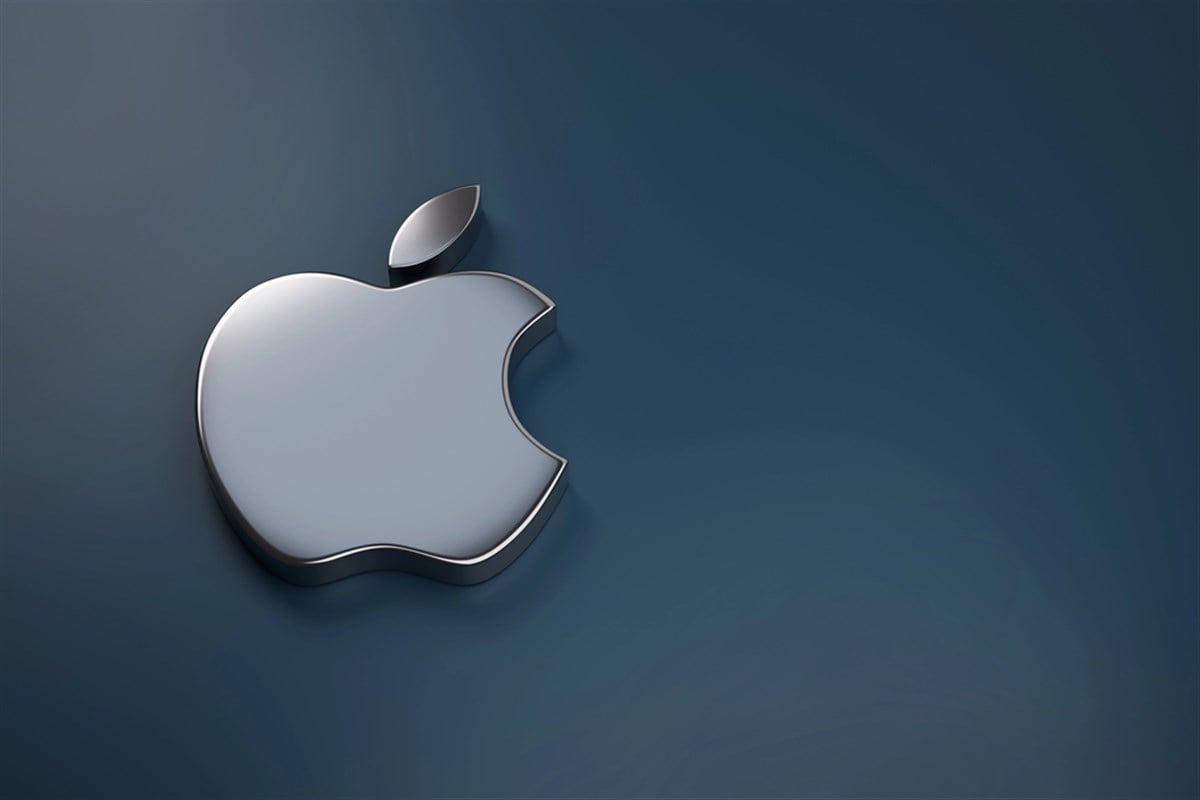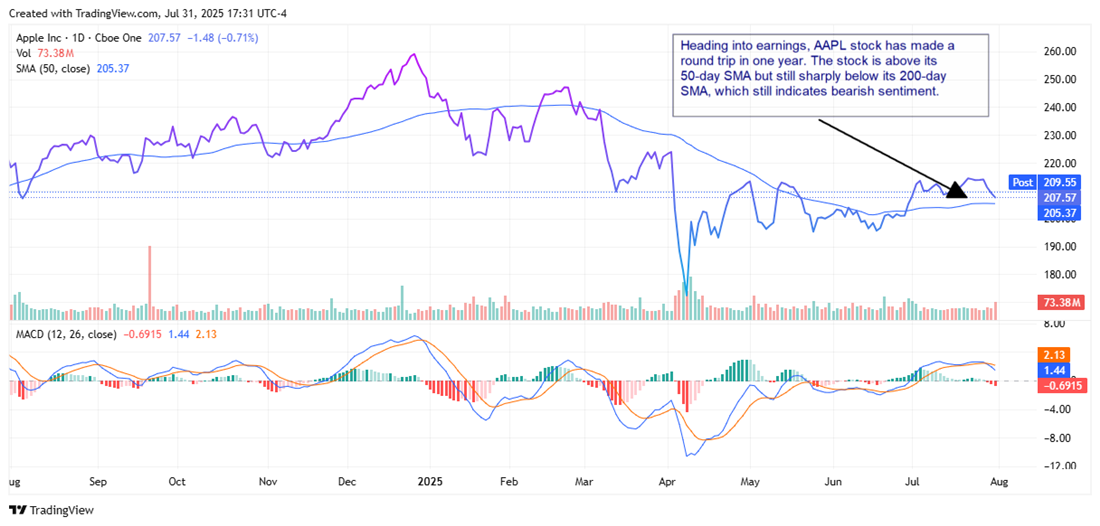Apple Stock: Big Earnings, Small Move—Time to Buy?

Apple Inc. (NASDAQ: AAPL) delivered a blowout earnings report after the market closed on July 31. That’s not showing up in the company’s stock price. The stock is up over 3% after the results dropped. However, the stock was trading just a little over 1% before the earnings call.
By every metric that matters to Apple investors, this was a strong report:
- Revenue of $94 billion beat expectations of $89.53 billion and was up 10% year-over-year (YOY). This was the best growth since the December 2021 quarter.
- Earnings per share (EPS) of $1.57 beat expectations of $1.43 and were up 12% YOY.
- Revenue for the iPhone came in at $44.58 billion, up 13.5% YOY.
- Revenue for Services came in at $27.42 billion, up 13.3% YOY.
- China revenue was up 4.4% YOY.
Apple also guided to mid- to high-single-digit revenue growth in the current quarter, which gave the tech company the feeling of the good old days. It shows that Apple’s user base of over 2.4 billion consumers is still willing to pay a premium for its products (the company hasn’t cut the price of its iPhone). However, investors seem to treat the quarter as if the results were already baked in.
A Low Bar to Clear, But Also a Low Ceiling?
The questions are why consumers bought like they did and whether these results are repeatable. The post-earnings reaction hints at a lot of skepticism. The results were refreshing for shareholders, for sure. However, immediately after the report came out, analysts chattered about the possibility of a “pull forward” in the company’s results.
That means consumers in the United States and China bought iPhones and other Apple products in the prior quarter in anticipation of higher prices due to tariffs. Chief executive officer (CEO) Tim Cook acknowledged that about 1% of the 10% growth the company saw in YOY revenue was due to that “pull forward” effect.
Specifically with China, government rebates and JD.com’s sales event (similar to Amazon Prime days) certainly had an impact.
What About AI?
While investors got a better-than-expected and certainly better-than-feared report, the company didn’t provide specifics about its AI intentions other than to say that it is focusing on the "new Siri" that is due out next year. Cook did say that the company would be increasing spending in AI, but the company didn’t put a number on that commitment.
In a big week for some of the largest technology stocks, bulls could say that Apple saved the best for last. However, when compared to the results from Microsoft Corp. (NASDAQ: MSFT) and Meta Platforms Inc. (NASDAQ: META), investors could be concerned that Apple isn’t playing the same game.
Is It Time to Bite into APPL Stock?
Apple had a low bar to clear heading into earnings. AAPL stock was down more than 18% in 2025 heading into the report. However, it’s also fair to say it has the lowest ceiling.
Before earnings, the Apple analyst forecasts on MarketBeat had a Moderate Buy rating on AAPL stock with a consensus price target of $234.94, a 13% upside for investors. That included a bullish $270 price target from Wedbush’s Dan Ives.
Bulls will point out that if Apple can repeat these results, AAPL stock could be the comeback trade in the year's second half. The bears will point out that it’s unlikely that Apple will be able to repeat this performance.
In the current quarter, Apple reported $800 million in tariff-related costs. That number will increase to $1.3 billion in the current quarter. On the earnings call, Cook acknowledged the tariff uncertainty by pointing out that the company would not issue guidance beyond the upcoming quarter.
The one-year chart for AAPL stock shows the stock has made a complete round trip and is trading almost exactly where it was at this time in 2024. Few investors would’ve expected that, and it makes it difficult to have conviction.

One trading idea could be a bull put spread. In this example, a trader would believe AAPL stock would stay above $200 per share in the next two to four weeks.
- Sell AAPL $200 Put
- Buy AAPL $195 Put (to limit downside risk)
- Net Credit: You collect the premium upfront
- Max Gain: If AAPL stays above $200 through expiration
- Max Loss: If AAPL closes below $195
This neutral-to-bullish setup allows traders to profit from a sideways or slightly rising stock without needing a breakout rally.
Learn more about AAPL


